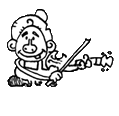short code test 2 July 20, 2019
Here is a lesson on [technique/tune/practice]
I’ll show you had to add variation to the basic version. Some things you fiddle with:
- Double stops
- Melodic variation
- Slides
{demo}
{Vimeo embed}
Video downloads are available to paid subscribers.
I recommend taking the beginner lesson first: [tuneName with link]
If you are a more advanced player, this might not be necessary, though you might want to look at the basic version anyway because it will help you to hear the essential melody.
—
Preparation
Warm up with a _ major scale with variations.
{embed scale}
Practice the scale and phrases from the tune (once you’ve learned it) with a D drone:
{embed _ static drone mp3 player}
—
Learning chunks {tune lessons}
I’ve made some “Learning Chunks” to help you learn more easily. These focused exercises contain sheet music, tabs and mp3 loops to guide you on your fiddle journey.
Warm-ups
Key interval: tab
{interval mp3}
Warm-up exercise #: tab
{tuneName_exercise # mp3}
Practice just the rhythm on an open string. Also, try clapping it.
↓
A part, first quarter
tab
{sheet music snippet, mp3 snippet}
Simply playing this is a good ‘small win’. Make sure you can loop it continuously before moving on to the next quarter. Take this approach with everything you learn.
—
A part, second quarter
tab
{sheet music snippet, mp3 snippet}
—
The rest of the learning chunks are available to paid subscribers, along with full play-along tracks with fiddle at high and low volume (so you hear yourself more), full tabs, alternate variations and full sheet music. Thanks for your support ?
—
Let’s practice! {technique lessons}
Exercise
{tabs/ sheet music snippet}
{mp3}
The rest of the exercises are available to paid subscribers, along with full sheet music. Thanks for your support ?
—
If this lesson was helpful, then add it to your Master Practice List so that you’ll remember to practice it tomorrow:
<script src=”https://ofcb.co/dRoXrP.js”></script>
—
Connections / Further Practice
Related Lessons
[lessonLink]
Other versions on Youtube
[Youtube embed]
—
Return To Top Of Module # >>
